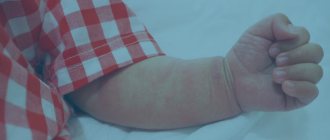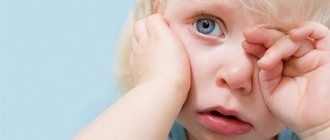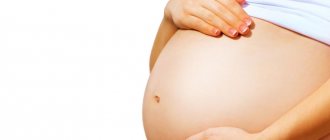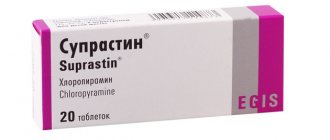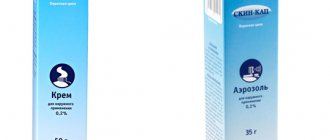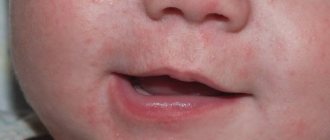- Pimples on the face, cheeks or butt in a 4, 5, 6 year old child: causes
- Infantile acne on a child's face and cheeks
- Treatment of acne in a child 4, 5, 6 years old on the face or butt
Baby acne or pimples in a child aged 4 to 6 years can really bother quite a few parents. Baby acne at this age is very common, but a short-term phenomenon. It will disappear without any medical help. In the end, the skin of a newborn should be smooth and clear But if you notice pimples on your baby's cheeks, forehead, chin or even back, don't worry.
Approximately 20 percent of all children have experienced neonatal acne at various short periods of time at the age of 4, 5 or 6. Experts do not know exactly what causes this type of acne, but there are suggestions that it was caused by stimulation of the baby's sebaceous glands.
Currently, experts and researchers in the field say that acne in a child of this age may occur due to an inflammatory response to yeast Malaysia on the skin.
The most common types of acne in children are papules and pustules. Papules are small, solid, round red bumps that rise from the skin and look like a red pimple. Pustules or whiteheads are small bumps of skin or a pimple in which pus has formed.
Most children develop pimples in and around the face, including the cheeks and sometimes the area on the scalp Most lesions that develop on a child's face will clear up spontaneously without treatment within a four-month period of time. In many cases, a child's acne will clear up within a few weeks. .
Atopic dermatitis51
This is a multifactorial chronic inflammatory skin disease, which is characterized by itching, relapses, age-related features of the location and morphology of the affected areas. In the pathogenesis of the disease, a special place is occupied by hereditary determination, due to which the following occurs:
- the skin barrier is broken;
- immune system defects occur;
- hypersensitivity to allergens appears;
- pathogenic microflora develops;
- the functioning of the autonomic nervous system is disrupted, resulting in an increase in the synthesis of inflammatory mediators.
Acne on a child's body associated with the manifestation of atopic dermatitis occurs in 20% of children.
In different age periods, the manifestations of atopic dermatitis differ:
- Infant. It appears in the first 3 months of a baby’s life. The clinical picture is dominated by erythematous spots, vesicles, papules located on the forehead, cheeks, and scalp. There is severe itching, weeping, and swelling. The location of the disease is the extensor and flexion surfaces of the limbs.
- Children's. This period is characterized by a rash represented by papules, papulovesicles, erythematous-squamous formations located on the arms (elbows, wrists, forearms), legs (feet, knees, ankles).
- Teenage and adult. Rashes on the child’s body are concentrated on the flexor surfaces of the arms and legs, on the back of the neck, and in the behind-the-ear areas. The disease is characterized by the appearance of erythema, peeling, papules, cracks, and infiltration.
White pimples
The cause of white pimples can be various diseases. The location of the rash will help determine which ailment occurs in a particular case:
| Localization | Most likely diagnosis | Associated symptoms |
| All over the body (especially on the shoulders and abdomen) | Allergic reaction | Itching, slight increase in body temperature. Rarely with this form: runny nose, red eyes. |
| Oral mucosa, tongue | Stomatitis, thrush | With stomatitis, apathy, irritability, and increased body temperature are observed. In thrush, the rash is often the only symptom. |
| Lips | Herpes (we recommend reading: herpes on a child’s leg: symptoms, photos and treatment) | Soreness and characteristic appearance of the rash. |
| Throat | Follicular tonsillitis | Fever, severe sore throat. |
| Chin | Teething | Lethargy, moodiness, fever, excessive salivation. Sometimes - signs of a cold. |
Non-pathological causes of white pimples include excess estriol in the mother. This hormone is released during pregnancy. If its content in the blood exceeds the norm, the child experiences a so-called bloom. A white rash can be a result of poor hygiene and develop as prickly heat. The formation of sebaceous glands occurs with the appearance of a rash. In these cases, treatment is not required. You need to follow the rules of hygiene, and the rash will go away on its own.
News MirTesen
Acne18
Acne is also a chronic inflammatory disease that is prone to recurrence. As with atopic dermatitis, there is a genetic predisposition to acne. But acne is a disease of the pilosebaceous follicles.
Childhood acne has its own characteristics depending on age:
- Infant. They are represented by closed comedones, localized on the chin, forehead, and cheeks. Papules and pustules are much less common.
- Acne in early childhood. Rash in the form of comedones, papules, pustules, nodes rarely appear. The location is mainly on the face.
- Middle aged acne. Mostly comedones and inflammatory elements appear on the face.
- Preteen. At 7-12 years old, acne on the face may indicate early puberty. The first to appear during this period are, as a rule, black dots in various areas.
Rash in children. Let's look at the reasons.
Tretyakova Daria Alexandrovna
Pediatrician
April 25, 2021
In the life of every parent, sooner or later there comes a time when, suddenly, some acne appears on the body of their beloved child. It's a rash. A rash is any change on the skin. It occurs in many diseases and conditions, some of them are very dangerous.
Let's try to figure out what the rash is, in what cases it appears, what it is accompanied by, and how mom and dad should behave so that it goes away faster.
Let's start with the simplest thing - insect bites. Primarily mosquitoes. As a rule, this rash causes surprise in early spring and late autumn, when mosquitoes are not yet remembered or are already forgotten. In modern winter conditions, mosquitoes can live indoors (for example, in the basement) almost all year round. Of all family members, small children are the most “tasty” for mosquitoes.
Parents notice changes in the skin in the morning, after the child wakes up. Mosquito bites are characterized by the appearance of pink or reddish spots mainly on open areas of the body: hands, forearms, feet, legs, i.e. those parts of the body that are not covered by pajamas, and there must be elements on the face, or, sometimes, on one half of it (if the child slept on his side). Most often, this rash is accompanied by itching, but not very severe. The child's general condition does not suffer. He behaves as usual - plays, runs, throws things around, watches cartoons and eats with appetite. If the child is not allergic to mosquito bites, then they do not require special treatment. It is enough to turn on the fumigator in the children's room (now there are special ones for children), and the problem will be solved by itself. In case of a severe allergic reaction, accompanied by severe swelling, redness, severe itching, it is necessary to give the child an antiallergic drug (for example, suprastin). You can treat bites with drugs such as Psilobalm or Fenistil-gel, which relieve swelling and irritation.
The next fairly common situation in which a rash occurs is an allergic reaction. Typically this is a food allergy. There are children who have allergies from early childhood. Parents of such children know exactly what food can be given to their child and what not. And they know very well how to care for the skin in this situation. Now I would like to dwell in more detail on the problem of the sudden development of allergies in a previously healthy child. This situation can develop when eating previously unfamiliar foods, exotic fruits, vegetables, and seafood. Or if familiar dishes are prepared in a special way, using a large number of spices and aromatic additives. Or if your child, having lost control, ate a pack of chips, snacked on tangerines, chocolates and washed it all down with a carbonated drink.
An allergic reaction appears quite quickly. Red spots of irregular shape, prone to merging and accompanied by severe itching, appear on the skin of the entire body or individual areas (cheeks, buttocks, behind the ears). The child's general condition may change: he may be lethargic or, conversely, too excited. Sometimes there is vomiting or loose stools. But more often the child feels well, but is very itchy. How can you help your child in this situation? First of all, it is necessary to exclude from his diet foods that cause an allergic reaction, even if they are very tasty and he loves them very much. Then you need to give the child sorbents - drugs that will remove the allergen from the child’s body. These include activated carbon, smecta, zosterin-ultra, filtrum. It is mandatory to take antiallergic drugs (the same suprastin or other drugs from this group). Fenistil-gel and moisturizer are applied to the skin. It would be a good idea to see a pediatrician or dermatologist.
An allergic reaction can also occur when the skin comes into contact with some substances, such as washing powder, fabric softener, etc. In this case, the rash appears only in those areas that were in direct contact with the allergen. The tactics of parental behavior in this case are similar to those for food allergies. Additionally, the substance that caused the reaction should be removed from the skin - rinse off under running water.
Now it is necessary to dwell on a large group of infectious diseases accompanied by a rash.
Varicella (chickenpox).
The appearance of a rash is usually preceded by a slight malaise, and symptoms of a mild acute respiratory infection may be observed. Then a rash appears. At first there is not much of it - a few red spots. Every day more and more new spots appear, and the old ones turn first into a papule - a “bump” that protrudes slightly above the skin, then into a blister with transparent contents, and finally, the blister dries out and a crust forms, which after a while disappears. From the moment the first spot appears until the last crust falls off, about 10-15 days pass, during which the sick child is contagious. The chickenpox rash is spread throughout the body, including the scalp and mucous membranes (mouth, eyes, genitals). The appearance of a rash with chickenpox is accompanied by itching, sometimes quite severe. Therefore, you can use suprastin, fenistil gel or psilobalm that you already know.
Rubella.
With rubella, the rash appears almost simultaneously throughout the body, but is more pronounced on the face, chest and back. It looks like small pale pink spots, almost the same size. The rash is profuse. Disappears without a trace within 4 days. A characteristic sign of rubella is enlargement of the occipital lymph nodes. All this is accompanied by mild symptoms of acute respiratory infections. There is usually no special treatment for rubella. But all children aged 1 year are recommended to be vaccinated against rubella.
Scarlet fever.
The disease begins acutely with high fever, sore throat when swallowing, and sore throat. At the beginning of the disease, the tongue is thickly covered with a white coating, then becomes bright red and shiny. The rash appears a few hours after the onset of the disease on the torso, limbs, with thickening in the natural folds of the skin (armpits, groin area). The rash is pink, pinpointed. In this case, the area around the mouth remains pale. After the rash disappears at the end of the first - at the beginning of the second week of the disease, peeling appears on the palms and soles. The disease is quite serious, because... leaves behind complications in the form of damage to the heart and kidneys. Requires mandatory prescription of antibiotics and a period of clinical observation with mandatory monitoring of blood and urine tests.
Measles.
A measles rash appears on the 4-5th day of illness against the background of severe signs of acute respiratory infections (cough, runny nose, conjunctivitis, high fever) and rashes within 3-4 days. The first elements of the rash appear on the face and upper chest. On the second day they spread to the torso, and on the third day to the upper and lower extremities. It looks like small red spots that tend to merge. Nowadays it is rare due to immunization of children at the age of 1 year.
“Sudden exanthema”, “roseola” or “sixth disease”.
It manifests itself as a high temperature, up to 39C, for 4-5 days with relatively good health. Then the temperature returns to normal, and a soft pink rash appears all over the body. Once the rash appears, the child is not contagious. Very often this rash is mistaken for an allergic reaction to antipyretic drugs.
Meningococcal infection and meningococcal sepsis are a deadly disease.
It is manifested by a very high temperature, a severe general condition of the child, which worsens every hour, vomiting, and impaired consciousness. Against the background of a high temperature, the child develops a rash (there may be only a few elements), which does not disappear with pressure. If you see such a picture in a child, you should immediately call an ambulance.
In addition to these diseases, a rash on the body occurs with a herpetic infection - in the form of blisters, with infectious mononucleosis - with the prescription of antibiotics from the amoxicillin group, with pseudotuberculosis and yersiniosis - in the form of “socks” and “gloves” and many others.
As a rule, the rash associated with various infections is quite typical and additional laboratory examination is not required to make a diagnosis.
In almost all infectious diseases, in addition to the rash, there is a high (or not so high) temperature, general malaise, loss of appetite, and chills. Your head, throat, or stomach may hurt. Have a runny nose, or cough, or diarrhea.
In addition to infections, the rash occurs with diseases of the blood or blood vessels. In these cases, the appearance of a rash is provoked by injuries, sometimes very minor. The rash looks like large or small hemorrhages (bruises) and requires additional examination to make an accurate diagnosis.
In conclusion, I would like to once again draw the attention of parents to the fact that they should not try to understand on their own what kind of rash the child has developed. Call a doctor. And most importantly, do not paint on this rash with fucorcin, iodine or brilliant green. Once you have satisfied your drawing needs, no doctor will ever guess what was really there.
Treatment of pimples on a child’s body
If a child has pimples on his body, he should consult a dermatologist. Only a doctor can accurately determine their cause and prescribe the correct treatment. One of the groups of drugs that can be prescribed by a dermatologist for acne are topical antibiotics18. Please note that they have age restrictions. For example, Clindovit® gel is not recommended for use under 12 years of age6.
Clindovit® is a gel that helps fight acne. The main active ingredient in its composition is the antibiotic lincosamide clindamycin6. The drug exhibits antibacterial activity against a large number of strains of propionibacteria6. Clindovit® helps reduce the level of free fatty acids on the skin6. To reduce the risk of antibiotic resistance, it is recommended to combine the use of the drug with the use of azelaic acid (for example, Azelik® gel) or benzoyl peroxide28.

